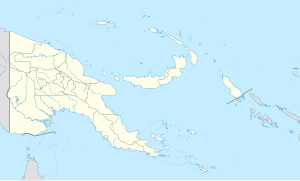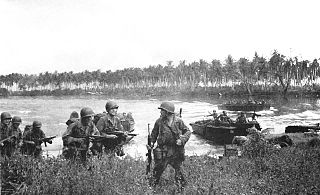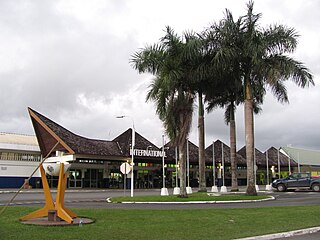
Bauerfield International Airport is an airport located in Port Vila, Vanuatu. The airport is relatively small in size, but its runway has the capability and length to accept jets up to the Airbus A330. It serves as the hub for Vanuatu's flag carrier airline, Air Vanuatu.

Operation Chronicle was the Allied invasion of Woodlark and Kiriwina Islands during World War II, in the South West Pacific as part of Operation Cartwheel. An early planning name for this operation was Operation Coronet. The operation was executed without opposition on 30 June 1943.

This is the complete order of battle of Allied and Japanese forces during the Borneo Campaign of 1945. As the campaign was fought in three geographically separate areas and the same air and naval units supported more than one of these battles the order of battle is split into the three areas.
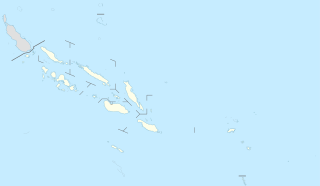
Yandina Airport is an airport on Mbanika in the Solomon Islands.

Santo-Pekoa International Airport is an airport in Luganville on Espiritu Santo in Vanuatu. Airports Vanuatu Limited provides aviation services for the airport.

Cape Field at Fort Glenn was a military site significant for its role in World War II. It consists of Fort Glenn, an airfield of the United States Army Air Corps later renamed Cape Air Force Base, and the adjacent Otter Point Naval Air Facility, both located on Umnak Island in the Aleutian Islands of southwestern Alaska. The site was listed on the National Register of Historic Places and declared a National Historic Landmark in 1987.

Fenton Airfield was a World War II military airfield in the Northern Territory of Australia located at Tipperary Station in what is now the locality of Douglas-Daly and named after flight lieutenant Clyde Fenton.

Guasopa Airport, is an airport at Guasopa on Woodlark Island, in the Milne Bay Province, Papua New Guinea.

Owi Airfield is a former World War II airfield located on Pulau Owi island in the Schouten Islands, Indonesia.

East Field is a former World War II airfield on Saipan in the Mariana Islands.
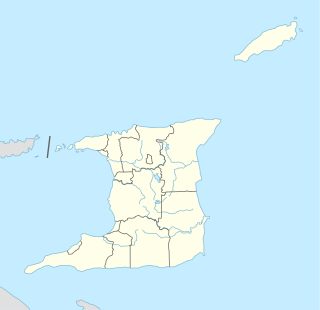
Carlsen Air Force Base is a former United States Army Air Forces World War II airbase on Trinidad, consisting of two landing strips, "Edinburgh" and "Xeres". The airbase also included an emergency landing strip, "Tobago".

San Antonio de los Baños Airfield is a military air base located near San Antonio de los Baños, a municipality in the province of Havana in Cuba. It is located approximately 3 mi (4.8 km) southwest of the city of San Antonio de los Baños, about 30 mi (48 km) southwest of Havana.

Lakeland Army Airfield, was a World War II United States Army Air Force located 5.3 miles southwest of Lakeland, Florida. From 1960 to 2017 it was Lakeland Linder Regional Airport. In 2017 it was renamed Lakeland Linder International Airport.
Nukufetau Airfield is a former World War II airfield on the south-eastern side of Nukufetau on Motulalo Island during the Pacific War.
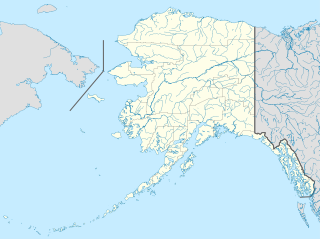
Cape Air Force Base also known as Fort Glenn Army Air Base, is a site significant for its role in World War II fighting, operating alongside Otter Point Naval Air Facility.

Majuro Airfield or Naval Air Facility Majuro is a former World War II airfield on the island of Delap in the Marshall Islands.
Palikulo Bay Airfield or Bomber Field #1 is a former World War II airfield on the island of Espiritu Santo in the New Hebrides Islands.

Nanumea Airfield is a former World War II airfield on the island of Nanumea in the Ellice Islands.
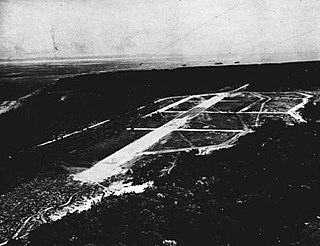
Kukum Field also known as Fighter 2 Airfield is a former World War II airfield on Guadalcanal, Solomon Islands.




